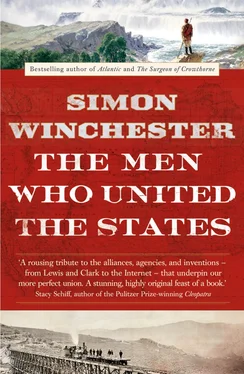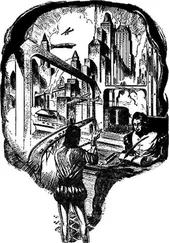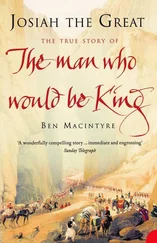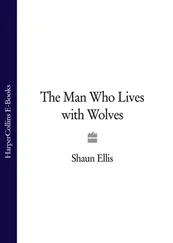The plains grasses from which these bison fashion their cud are of very different kinds and appearance, depending largely on the rainfall, the mean temperatures, and the thickness of the soil. Latitude plays its own part, of course; but longitude has the greater role in dividing each from each. Generally speaking, the Great Plains extend between the 95th and 105th meridians—with the midline, the line marking 100 degrees west of Greenwich, denoting by tidy coincidence the approximate limit of twenty inches of rainfall a year: west of the line is drier, true rain-shadow country, while to its east the rainfall becomes ever more abundant and more steady. Altitude plays a part also: because the plains generally slope downward from west to east, from the Rockies to the Missouri River, the western plains are higher, the made-for-movies hardscrabble country of the High Plains, indeed.
This is the great Dust-Bowl-to-be country, rarely much good for agriculture, where otherwise munificent bankers were traditionally reluctant to lend to settlers who were proposing to live there and farm. In this western dry country, the plains are dominated by very short tufted grasses like fescue and needlegrass, and later by hardy imports like crested wheatgrass.
On the 100th meridian itself, in the midplains, there is more of a mix. In what is now Nebraska, say, with its wide, empty farm fields, Willa Cather’s famous “shaggy coat of the prairie” has a pile six feet high at least, made of deep big bluestem, Panicum witchgrass, wild rye, perennial tussock grasses like yellow Indiangrass, and a weave of flowering timothy and blue grama. (The last is a prairie grass that currently displays its own limitations, for it manages at once to be sufficiently abundant to be the official state grass of Colorado and yet is classified as endangered only five hundred miles east in Illinois, whose western counties, if not quite the Great Plains, are very much a part of the tallgrass prairie.)
Lewis and Clark saw all of these grasses—even timothy, the only non-native of the group, which had been introduced from Europe more than a century before and had spread across the nation with astonishing speed. But one plant they would not have seen, despite its now being a near-legendary symbol of the plains—was tumbleweed.
The image of tumbleweed—a ghostly botanical thing looking like a bouffant hairpiece, bouncing steadily across a dusty road before a cold and gritty wind, lodging itself eventually in a barbed-wire fence—is persistent, emblematic, frequently adopted by Hollywood, and generally best viewed on the screen in black-and-white. In most cases, the plant involved is the Russian thistle, Salsola tragus , a pest of a weed, loathed by farmers. The reason Lewis and Clark never reported seeing it is that they arrived too early on the scene by many decades: the vanguard of the tumbleweed invasion came with the accidental importation of thistle seeds in a sack of flax brought to the Dakotas by settlers in the 1870s, six decades after the Corps of Discovery had passed by. It is now just about everywhere, occurring clear across the middle country, from the dusty American West to the lush soils of the Missouri Valley.
It was the eastern tallgrass prairie that Lewis and Clark would have first glimpsed when they made initial contact with the plains during their gentle upriver paddle through what is now Kansas, Nebraska, and the Dakotas. On July 4, for instance, when the party was near Leavenworth, Kansas, Clark wrote:
The Plains of this countrey are covered with a Leek Green Grass, well calculated for the sweetest and most nourishing hay—interspersed with cops of trees. Spreding their lofty branches over Pools Springs or Brooks of fine water. Groops of shrubs covered with the most delicious froot is to be seen in every direction, and nature appears to have exerted herself to butify the Senery by the variety of flours … raised above the Grass, which Strikes and profumes the Sensation, and amuses the mind.
Clark’s “Leek Green Grass” of 1804 is simply today’s big bluestem, the classic of the tall grasses. Its appearance among the scattered copses here hints at the borderline between prairie proper and Great Plains. And Clark is prescient indeed in remarking on its “sweetness” and on the “froot.” This tract of countryside, with its two-foot-deep soil that once gave support to these long grasses, would (once John Deere had perfected his steel plow blade in the 1830s to create a splendid tilth) become America’s present-day granary, with section after section laid to the endless acres of wheat and corn of the richest and most productive grain belt in the world.
But that is the eastern edge, where the soils are rich and fertile. Just six scant weeks and seven hundred miles later, when the expedition had come to what is now Fort Thompson, South Dakota, all had changed. The men had by now passed the mouth of the sand-laden Platte River. Frontiersmen scorned this long and wandering stream, “a mile wide and six inches deep,” as “too thick to drink, too thin to plow,” and held that passing northward over it held a symbolism similar to crossing the equator. The explorers were now in a harsher, drier territory, a wilderness of small braided streams, alkaline flats, and immense buffalo herds, where small cottonwood groves grew only in the deeper stream valleys and where the rich planting soil had given way to rougher grazing land, as Lewis himself noted:
I found the country in every direction for about three miles intersected with deep revenes and steep irregular hills of 100 to 200 feet high; at the tops of these hills the country breaks of as usual into a fine leavel plain extending as far as the eye can reach … [T]he surrounding country had been birnt about a month before and young grass had now sprung up to a hight of 4 Inches presenting the live green of the spring … [T]his scenery already rich pleasing and beautiful, was still hightened by immence herds of Buffaloe deer Elk and Antelopes which we saw on every direction feeding on the hills and plains.
North of the Platte, they had now passed into the true short-grass prairie, and they would have made it farther west, perhaps into the High Plains themselves, had not winter intervened. The first snows came in October. The Missouri was by now substantially shallower, slower moving, and, free of the Platte sands, clearer and purer. As destined by its hydrodynamics it soon started to freeze, and the expedition was obliged to set down its planned winter camp.
By now the expedition had already begun to encounter scatterings of Indians—and in November would meet with one group of Native Americans—and one Native American in particular—who would profoundly change the tempo, the temper, and the reputation of their adventure.
ENCOUNTERS WITH THE SIOUX
The smallest commercial nuclear power station in America is in Nebraska, standing slightly sheepishly on the west bank of the Missouri. Since 1973 it has supplied with a fair degree of constancy (though lately interrupted by flooding) a modest amount of electric power to the city of Omaha, forty miles to its south. It is officially the Fort Calhoun Nuclear Generating Station, and it stands more or less on the very point, just around river milepost 645, where Lewis and Clark had their first official meeting with a delegation of Indian chiefs.
The encounter took place on August 3, 1804, three months out from Saint Charles. The chiefs were from one of the country’s lesser seminomadic peoples, the Otoe tribe. They were not the first Indians the explorers had seen. Every so often, Clark noted in his diary having passed by trapper boats, with usually a Frenchman and a native client aboard, but these Otoe were the first to be properly and formally met. And the explorers were fully prepared for them, backed as they were by the full authority of the White House, with dozens of preprinted forms on stiff white card ready to hand out when appropriate.
Читать дальше












